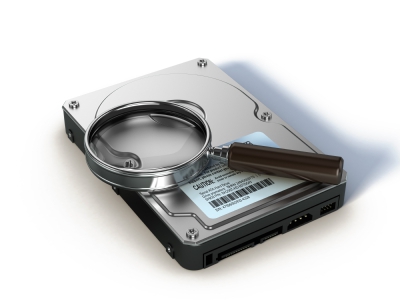Reallocated Sectors Count /CRITICAL ATTRIBUTE/ When disk detects a read/write error, it marks a sector as ‘reallocated’ and moves data to special allocated area. That is why one cannot see bad blocks on modern hard disk drive — they are all hidden in reallocated sectors. This process is called ‘remapping’ and reallocated sector is called ‘remap’. The higher the value the worse is the condition of disks’ surface. Raw value field contains the total count of reallocated sectors.
Seek Error Rate /CRITICAL ATTRIBUTE/ The rate of errors during head stack positioning. The more there is, the worse is the condition of mechanics and/or hard disk surface.
Seek Time Performance. Average performance per magnetic head stack positioning. If attribute’s value lowers then there is a high chance of problems with mechanical part.
Power-On Hours (POH). Number of hours spent while powered on. The threshold value for it is MTBF — mean time between failure.
Spin-Up Retry Count /CRITICAL ATTRIBUTE/ Number of repeated attempts to spin-up in case if the first attempt failed If the attribute’s value increases, there is a high chance of problems with mechanical part.
Recalibration Retries. Number of recalibration retries is case if the first attempts failed. If the attribute’s value increases, then there is a high chance of problems with mechanical part.
Device Power Cycle Count. Number of disk’s full power on/off cycles.
Soft Read Error Rate. Number of read errors due to software.
Airflow Temperature (WDC). Air temperature inside the enclosure of Western Digital hard drive. For Seagate is calculated using the following formula: 100 — HDA temperature.
G-sense error rate. Number of errors appearing as a result of buff load.
Power-off retract count. Number of power-off or emergency retract cycles
Load/Unload Cycle. Number of head stack assembly transfer cycles to landing area/run position.
HDA temperature. Contains readings from inbuilt thermal detector.
Hardware ECC Recovered. Number of data transfer errors via databus that were not recovered by hardware. On SATA disks the value usually worsens during system bus frequency ‘acceleration’ — SATA interface is very sensitive to computer ‘acceleration’.
Reallocation Event Count /CRITICAL ATTRIBUTE/ Attribute’s raw value field contains total number of attempts to transfer information from reallocated sectors to reserve area. Both successful and unsuccessful attempts are taken into account.
Current Pending Sector Count /CRITICAL ATTRIBUTE/ The field contains number of sectors pending replacement. They have not yet been marked as bad but reading from them differs from reading from a normal sector, these are so-called suspicious or unstable sectors. In the event of next successful read operation, the sector is excluded from the pending sectors list. In the event of repeated errors in reading hard drive will try to recover it and reallocates it.
Uncorrectable Sector Count /CRITICAL ATTRIBUTE/ Number of uncorrectable errors upon accessing sector. If number of errors increases, there is a high chance of critical surface defects and/or mechanical defects.
UltraDMA CRC Error Count. Number of errors, appearing during data transfer via external interface.
Write Error Rate /
Multi-Zone Error Rate. Displays total number of errors that occur during sector write. Can serve as an indicator of surface and mechanical part quality.
Soft read error rate. Number of off-track errors
Data Address Mark errors. Number of Data Address Mark (DAM) errors (or) vendor-specific
Run out cancel. Number of ECC errors
Soft ECC correction. Number of software-corrected ECC errors.
Thermal asperity rate (TAR). Number of thermal asperity errors
Flying height. Height between head and disk surface.
Spin high current. Amount of high current used to spin up the drive
Spin buzz. Number of buzz routines to spin up the drive
Offline seek performance. Drive’s seek performance during offline operations
Disk Shift /CRITICAL ATTRIBUTE/ Disk stack shift distance with respect to spindle. Usually occurs due to shock or fall. Measurement unit is unknown.
G-Sense Error Rate. Number of errors that occurred due to external load and shock. The attribute contains readings of inbuilt shock detector.
Loaded Hours. Time spent by head stack assembly between unloading from landing area and back.
Load/Unload Retry Count. Number of new attempts to load/unload head stack assembly in/from landing area after unsuccessful attempt.
Load Friction. Value of friction force of head stack assembly during loading/unloading from landing area.
Load 'In'-time. Time required to unload magnetic heads from landing area into work surface.
Torque Amplification Count. Number of attempts to compensate torque.
Power-Off Retract Cycle. Number of retract cycles of automatic head stack assembly landing as a result of power off.
GMR Head Amplitude. Oscillatory amplitude (distance of repeated shift of HSA)
Temperature. Hard disk drive’s temperature
Head flying hours. Time of head positioning
Read error retry rate. Number of errors that occurred during hard drive read operations.



 S.M.A.R.T.
S.M.A.R.T.
